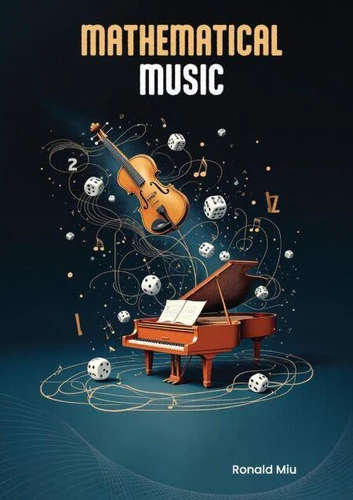Mathematical Music
Par :Formats :
Disponible dans votre compte client Decitre ou Furet du Nord dès validation de votre commande. Le format ePub est :
- Compatible avec une lecture sur My Vivlio (smartphone, tablette, ordinateur)
- Compatible avec une lecture sur liseuses Vivlio
- Pour les liseuses autres que Vivlio, vous devez utiliser le logiciel Adobe Digital Edition. Non compatible avec la lecture sur les liseuses Kindle, Remarkable et Sony
 , qui est-ce ?
, qui est-ce ?Notre partenaire de plateforme de lecture numérique où vous retrouverez l'ensemble de vos ebooks gratuitement
Pour en savoir plus sur nos ebooks, consultez notre aide en ligne ici
- FormatePub
- ISBN978-969-8792-34-3
- EAN9789698792343
- Date de parution18/07/2025
- Protection num.pas de protection
- Infos supplémentairesepub
- ÉditeurRonald Miu
Résumé
This book provides a mathematical approach to music composition. Although this topic has attracted significant attention, existing efforts focus on algebra and number theory. We add to the literature of applied mathematics by leveraging stochastic processes to compose chamber music. The first several chapters of the book introduce key concepts from probability theory. Subsequent chapters explore elements of music theory, such as atonality, chord, mode, scale, and tonality, and demonstrate how to connect them with concepts in probability theory.
Later chapters outline a C++ program to generate note indices and finally formulate a measure for a string quartet. This book is intended for students with prior coursework in introductory C++, probability theory and stochastic processes, and music theory I and II. Potential future research directions in this field are also highlighted.
Later chapters outline a C++ program to generate note indices and finally formulate a measure for a string quartet. This book is intended for students with prior coursework in introductory C++, probability theory and stochastic processes, and music theory I and II. Potential future research directions in this field are also highlighted.
This book provides a mathematical approach to music composition. Although this topic has attracted significant attention, existing efforts focus on algebra and number theory. We add to the literature of applied mathematics by leveraging stochastic processes to compose chamber music. The first several chapters of the book introduce key concepts from probability theory. Subsequent chapters explore elements of music theory, such as atonality, chord, mode, scale, and tonality, and demonstrate how to connect them with concepts in probability theory.
Later chapters outline a C++ program to generate note indices and finally formulate a measure for a string quartet. This book is intended for students with prior coursework in introductory C++, probability theory and stochastic processes, and music theory I and II. Potential future research directions in this field are also highlighted.
Later chapters outline a C++ program to generate note indices and finally formulate a measure for a string quartet. This book is intended for students with prior coursework in introductory C++, probability theory and stochastic processes, and music theory I and II. Potential future research directions in this field are also highlighted.



